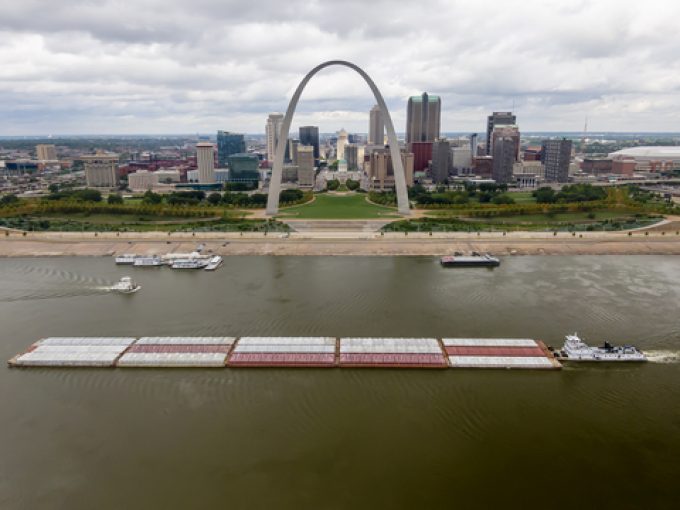Capture of MSC Aries will further drive up Indian export costs
With heightened geopolitical tensions sparked by the Iran-Israel faceoff, Indian exporters are again staring at ...

Falling water levels continue to disrupt cargo traffic through the Panama Canal as well as on the Mississippi river.
There is no relief in sight for either key traffic artery, with restrictions for the Canal likely to remain in effect through next year, while shippers on the Mississippi are bracing for worse disruption in the coming weeks.
Concerns about the viability of the Panama Canal as an efficient route for trade are mounting as the drought that has impacted shipping there is threatening to extend the restrictions on vessel transits all the way through next year.
The Panama Canal Authority has warned that both the duration and the severity of the situation are more serious than ever before.
“The current drought severity, coupled with its recurrence, is historically unprecedented,” it commented.
The drought in what used to be one of the rainiest places on earth has lasted for six months already and is showing no sign of coming to an end before the start of the dry season. Each vessel transit uses 193m litres of fresh water from the canal’s watershed, which supplies fresh water to three cities.
Restrictions on the number of daily transits and on vessel draught have been in place since June and are now expected to remain in place for the coming 16 months, as the water levels along the canal’s watershed are seriously depleted.
Currently draught restrictions are at 44 feet (from 50 feet under normal circumstances) for neo-Panamax locks, and transits are down from 40 a day to 32, with 10 transits for neo-Panamax and 22 for Panamax ships.
This has led to rising congestion as more vessels wait for transit. At the end of August 135 ships were awaiting their turn. Of those, 53 had reservations for fixed transits, while the rest faced wait times of 9-10 days, up from a usual average of five days. In some vessel categories wait times doubled from July to August.
While container ships usually have booked transits in advance, others, such as liquefied natural gas and liquefied petroleum gas carriers, have been seriously impacted by the restrictions.
For the canal authority the restrictions translate into an estimated $20m shortfall in earnings compared to last year. The authority is making some gains on limited auctions of transits for vessels that want to jump the line – one LPG carrier reportedly paid $2.4m in a recent auction, on top of the $400,000 standard transit fee.
The congestion is also a worry for US agriculture exporters shipping cargo to Asia. About 72% of the traffic through the canal is made up of US imports and exports.
US soybean exports moving through the canal have fallen sharply this year – largely as a result of lower demand, but also because of delays on the route. Transit times to Asia via the canal are about 58 days, compared to 81 days via the Suez Canal and 88 days around the Cape of Good Hope.
Container traffic has not shown any diversions to other routes so far, as these ships usually do not face delays. However, some post-panamax ships had to offload some of their cargo to move by rail across the isthmus because of draught restrictions.
US agriculture shippers are also facing challenges on the Mississippi river, where water levels have been falling since June, bringing back restrictions on barge loads. According to American Commercial Barge Line, the drought has reduced capacity by 15%.
As a result, spot rates have been on the rise. Spot pricing out of St Louis to the mouth of the river was up 42% year on year, according to the Department of Agriculture’s weekly Grain Transportation Report at the end of August.
“With lower-than-normal precipitation in the forecast, levels will likely continue to fall in the coming weeks,” its authors warned.
With soybean and corn harvest in full swing, the volume of traffic headed down the Mississippi – and possibly on to Asia via the Panama Canal – is expected to be high in the coming weeks.
Comment on this article